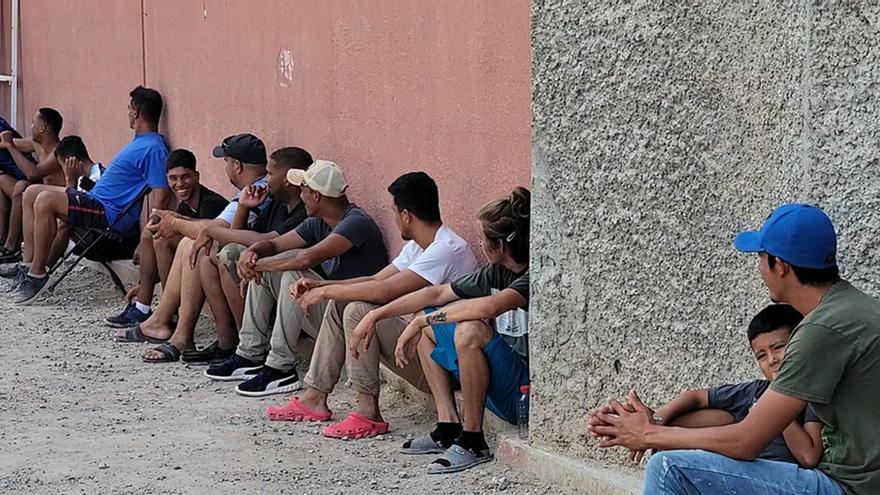
![]() 14ymedio/EFE, Mexico/Honduras, 6 September 2023 — Between January and September 3, 29,987 Cubans have entered Honduras irregularly, according to figures from the National Migration Institute. The flow of undocumented people from Africa, Asia and America totals 257,885 people. Given this increase in immigrants, the coordinator of the National Human Rights Commission (Conadeh), Liliana Reyes, called for “respect for the human rights of migrants, who must be seen and cared for as subjects of law.”
14ymedio/EFE, Mexico/Honduras, 6 September 2023 — Between January and September 3, 29,987 Cubans have entered Honduras irregularly, according to figures from the National Migration Institute. The flow of undocumented people from Africa, Asia and America totals 257,885 people. Given this increase in immigrants, the coordinator of the National Human Rights Commission (Conadeh), Liliana Reyes, called for “respect for the human rights of migrants, who must be seen and cared for as subjects of law.”
In recent years, Honduras has become a transit point for migrants crossing Central America to reach the United States. During the journey, people turn to coyotes, who take them through so-called “blind spots.” Cubans have denounced that as they pass through this country they are victims of extortion by police, who demand that they pay 20 dollars at checkpoints, and the collection of fines by the immigration authorities.
Reyes considered it necessary to involve the National Migration Institutes, foreign ministries, Health Secretariats and Public Ministries, because many migrants suffer crimes and abuses on their migratory route. Given the emergency and the migration crisis that is being experienced in the country, solidarity, humanitarian and medical assistance and temporary accommodation are required for migrants transiting through Honduras.
Of the 257,885 migrants entering Honduras, 92% did so through the eastern zone, which includes the municipalities of Danlí and Trojes, in the department of El Paraíso, bordering Nicaragua, according to EFE. Of these, 41,164 were children.
Venezuelan migrants make up the greatest number of those traveling through Honduran territory, totaling 115,588, followed by Ecuadorians with 31,119, Cubans with 29,987 and Haitians with 24,450.
On the journey of hundreds of thousands of migrants to the United States, Mexico is another point of conflict. Faced with the wave of people from Cuba, Venezuela, Honduras, Nicaragua, China, India, who are arriving at the border Ciudad Juárez (Chihuahua), the mayor of the city, Cruz Pérez Cuéllar, launched an SOS to the Federation and the state to help control and manage the arrival of people in transit.
According to data from the municipality and support organizations for people in transit, the shelters are overflowing with more than 2,400 migrants, while dozens of foreigners are once again seen asking for money on cruise ships. “The Kiki Romero shelter, about which we have the most information at hand, is overflowing,” Pérez Cuéllar stressed. “We are talking with the National Migration Institute (INM) to request that the Sabalza surveillance point be reactivated.”
The Somos Uno shelter network in Juárez has 1,200 people registered in its 13 locations, while the Casa del Migrante houses 300 people, and between the Kiki Romero and Leona Vicario centers there are another 900 for a total of 2,400.
The crush of migrants is such that, not finding room in the shelters, they have begun to invade public buildings and parks. Hundreds of people have settled against walls and buildings that were abandoned because they do not have a place to stay.
The authorities began reviewing the conditions of these ruined buildings, removing migrants if the property puts their physical integrity at risk. “We want to avoid tragedies and that is why we filed the complaint against the Hotel de Luxe, an abandoned four-story building that was invaded by more than 150 migrants,” said the mayor.
Pérez Cuéllar suggested blocking the passage of migrants as much as possible from the entrance to Chihuahua to prevent so many from reaching the border. “When the Sabalza vigilance point was activated it helped us reduce the flow of migrants and now that he it not active we are having the problem again,” said the mayor.
Father Francisco Bueno Guillén, director of the Casa del Migrante, said that after Title 42 ended the number of migrants in the city dropped to 1,200.
However, after a plan was announced to begin processing migrants from centers in Mexico, a new wave of people began arriving in the city. Last week the priest estimated that there were already at least 8,000 migrants in the city, about 1,100 living in the street.
The situation in Ciudad Juárez reflects what the border is experiencing after several weeks of the end of Title 42 in the United States, a measure adopted by Donald Trump (2017-2021) and then continued by President Joe Biden to expel migrants immediately under the argument of the Covid-19 pandemic.
____________
COLLABORATE WITH OUR WORK: The 14ymedio team is committed to practicing serious journalism that reflects Cuba’s reality in all its depth. Thank you for joining us on this long journey. We invite you to continue supporting us by becoming a member of 14ymedio now. Together we can continue transforming journalism in Cuba.
